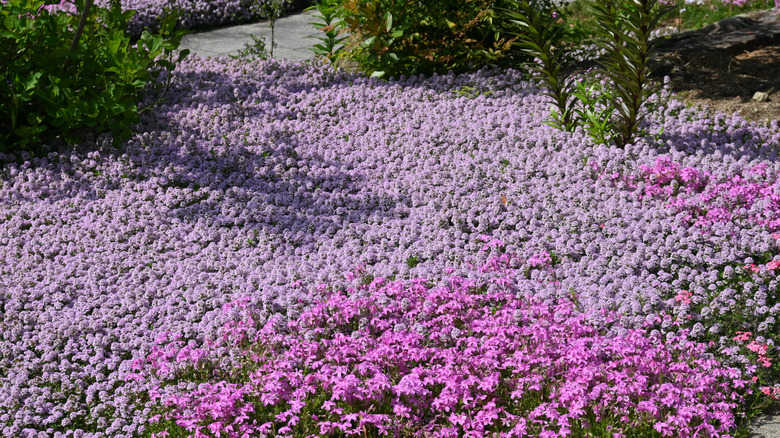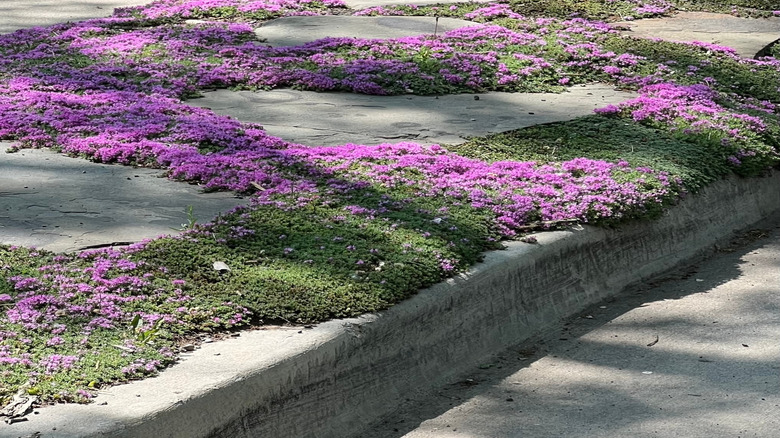What To Know Before Planting Creeping Thyme As A Ground Cover
If you're looking for a ground cover to prevent weeds from taking over, you will likely come across suggestions to use creeping thyme. There are many common mistakes to avoid when using creeping thyme as a ground cover, however, there's one to keep in mind before you even head to the store: Don't buy the wrong one. There are many plants that fall under the umbrella of creeping thyme, and you will want to take some time to find the right one for your use. Many of these varieties have similar growing conditions, however, some grow faster and fuller than others. So, before you choose one, you need to know exactly where you want to put the plant and what you expect it to do.
Quite often, when talking about creeping thyme people mean 'Magic Carpet' (Thymus serpyllum). It's very low-growing at just 1 to 2 inches tall, evergreen, and can grow up to 12 inches wide. It also sprouts pink or purple flowers to add a bit of color to your ground cover. However, if you're at the nursery and look closely, you might find more than one type of creeping thyme to choose from. For instance, you might also see woolly thyme (Thymus praecox) nearby, which grows taller at 3 to 6 inches tall. Add the creeping cultivars and other types of thyme that work well as ground covers but don't necessarily qualify as creeping and your head may spin at all the options.
Choosing the right creeping thyme for your ground cover
Thyme tends to like full sun and can thrive in sandy or rocky soil. Generally, it's safe to assume any kind of thyme loves hot, sunny spots and can tolerate poor soil. So, assuming you've got those conditions, the next question is where, exactly, do you want to plant your thyme. Your answer will determine which kind of creeping thyme you should choose. This plant is often used between pavers or stepping stones. If this is the case, you may want to look for slower growing varieties. Elfin thyme (Thymus serpyllum 'Elfin') can be a good choice for this use case, as it tolerates light foot traffic and grows slowly. If you choose a faster growing variety, you may find it covers your pavers as well as the ground.
If, on the other hand, you have bigger areas to cover, you may want to choose something like creeping pink thyme (Thymus serpyllum 'Pink Chintz') which spreads more quickly and is even used as a lawn replacement in some instances. Doone Valley thyme (Thymus citriodorus 'Doone Valley') also spreads quickly, and has refreshingly lemony scent that some people may enjoy, especially in larger areas. If you are realizing that you may not have the hot, sunny conditions for any type of thyme, consider these 15 ground cover plants that love shade instead.

